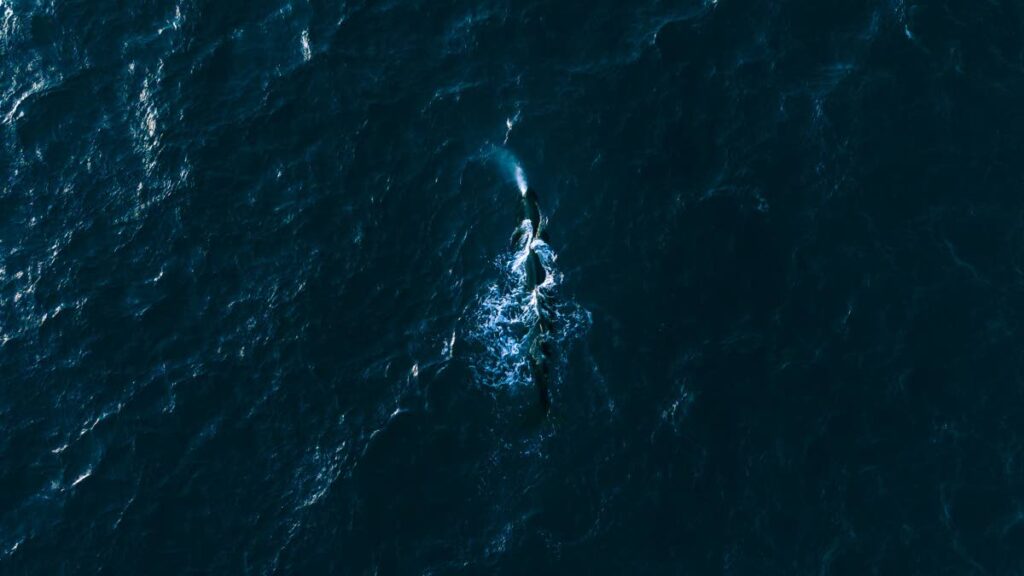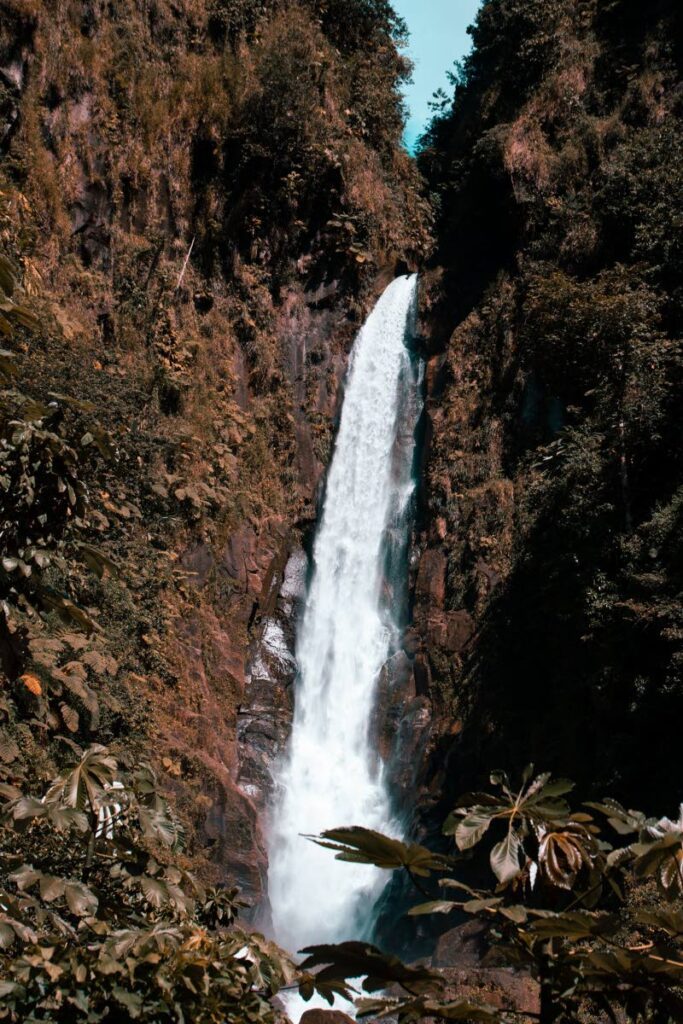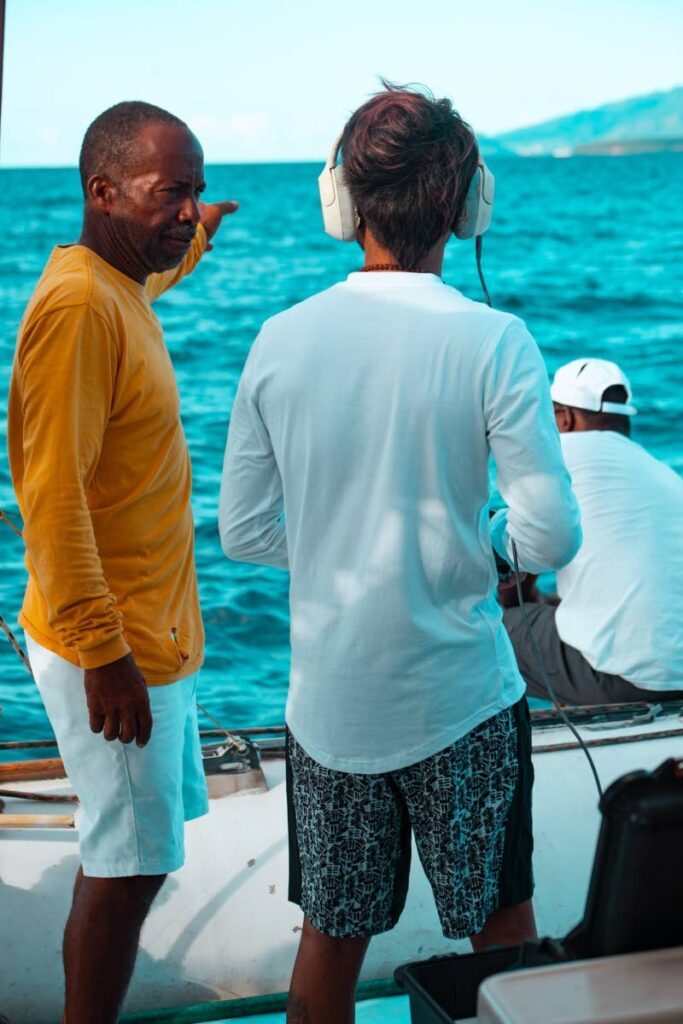The sperm whales of Dominica

Syam Nath visited Dominica and the whale sanctuary, with its unique families of sperm whales. Nath leads the TT Cetacean Sighting Network (TTCSN). He encourages sightings to be reported to info@ttcsn.org or @ttcsn_org.
My recent expedition to Dominica was driven by a quest to gain deeper insight into conservation, eco-tourism, and the critical role of biodiversity.
A 100-minute flight with Caribbean Airlines transported me to this unique destination, known as the Nature Isle. Dominica greeted me with its astounding geological wonders and breathtaking landscapes.
I was immediately immersed in a world where nature’s rhythms are the heartbeat of life. The island’s lush greenery and rugged terrain promised a new perspective on environmental stewardship and an opportunity to observe how a small island nation is protecting the natural world.
Dominica’s natural tapestry is a rich mosaic of flora and fauna, a living testament to the island’s dedication to preserving its ecological heritage. From the vantage point of Fort Young Hotel, the island’s unspoiled beauty unfolds. The luxurious sustainability of Secret Bay, the rustic charm of Jungle Bay Resort, and the opulent comfort of Coulibri Ridge and the InterContinental Cabrits showcase eco-friendly luxury that respect and complement the natural environment. These establishments demonstrate how tourism can coexist with nature conservation.
My excursions across Dominica were a celebration of nature’s artistry. The Emerald Pool, a tranquil natural amphitheatre, and Scotts Head, a panoramic masterpiece, displayed the island’s ecological diversity. The icy embrace of Ti Tou Gorge and the awe-inspiring Trafalgar Falls were vivid demonstrations of nature’s unbridled power, while the Ti Kwen Glo Cho thermal baths offered a spa-like state of hypnotic relaxation.
Marine conservation
Dominica’s commitment to conservation is a model for the Caribbean. The island has established the first sperm whale reserve, spanning 800 square kilometres. This initiative is a testament to the foresight and dedication of Dominica’s policymakers and citizens. The integration of local communities in these conservation efforts is noteworthy and serves as a model for all our islands and Caricom.
Comparing conservation strategies between Dominica and resource-rich TT provides intriguing insights. TT may have greater economic resources, but Dominica’s strategic policy and community engagement in preserving natural biodiversity are commendable.

This comparison underscores the idea that a nation’s true wealth is not measured solely by economic prowess but by its commitment to safeguarding its natural heritage.
In Dominica, the whispers of the ocean constantly remind us of the mysteries beneath its surface. Our work at TTCSN aims to emulate the research frontiers established in Dominica, particularly with projects like Project CETI. This project, in collaboration with renowned researchers like Dr Shane Gero, reflects Dominica’s dedication to cetacean research.
Gero, a scientist-in-residence at Carleton University in Canada and head of the Dominica Sperm Whale Project, has produced ground-breaking research that sheds light on the lives and behaviour of these immense ocean dwellers. By employing hydrophones, underwater microphones, we followed their sonic traces.
Eastern Caribbean sperm whales
Sperm whales boast the largest brains in the animal kingdom, six times larger than ours. These mammals can grow up to 18 metres long and weigh over 40 tonnes. They have deep family bonds, passing knowledge across generations through matriarchies.
The Eastern Caribbean sperm whale clan is distinct from any other sperm whale population worldwide. Whales are migratory, but this group of over 20 families is found around Dominica and its neighbouring islands all year round.
This gives marine biologists, ecologists, and bio-acousticians a rare chance to study these leviathans extensively. Even researchers from the SETI Institute, who explore outer space for extra-terrestrial life by decoding transmitted signals, hope to learn from the complex communication system of sperm whales.

The whales communicate using broadband staccato signals known as clicks, arranged in repeating patterns called codas, similar to codas in musical theory. These codas vary among clans, allowing researchers to identify different groups. Each clan uses unique coda sets akin to distinct dialects.
Their echolocation clicks, the most potent sound in the animal kingdom, can rupture a human eardrum. Through this sonar, like bats, they can “see” their environment and prey, particularly in the deep sea where light barely penetrates beyond 200 metres.
Nature’s carbon reserves
Whales are considered keystone species in the ocean, crucial for the ecosystem’s equilibrium. They are also vital allies in the fight against climate change, playing several key roles in this regard:
Carbon sequestration: Whales accumulate carbon in their bodies throughout their lives. When they die, their carcasses sink to the ocean floor, effectively removing that carbon from the atmosphere for centuries.
Enhancing phytoplankton growth: Like terrestrial plants, phytoplankton absorb carbon dioxide through photosynthesis. Whales support this process through their faecal plumes, rich in iron and nitrogen, essential nutrients for phytoplankton growth. Increased phytoplankton populations mean greater absorption of carbon dioxide.

Climate regulation: These tiny phytoplankton not only absorb CO2 but also contribute to cloud formation by releasing aerosols that rise into the atmosphere and reflect sunlight away from the earth’s surface, helping regulate the planet’s temperature.
Scientific awareness: Whales have become a vital symbol in the fight against climate change, fostering public interest and understanding. This, in turn, can drive conservation efforts and policies aimed at protecting the ocean, which is essential in the battle against climate change.
Whales contribute to climate regulation both directly and indirectly. Protecting whale populations is not just about conserving biodiversity but also about harnessing nature’s mechanisms to fight climate change.

My journey to Dominica was more than an exploration; it was a clarion call to action. The Caribbean’s greatest treasures are its natural ecosystems, from the ocean depths to the heights of the rainforests. By conserving these treasures, we safeguard our heritage and ensure a sustainable future for generations to come. Dominica is a reminder and an inspiration: in the chorus of nature lies the blueprint for our survival and prosperity.

Comments
"The sperm whales of Dominica"